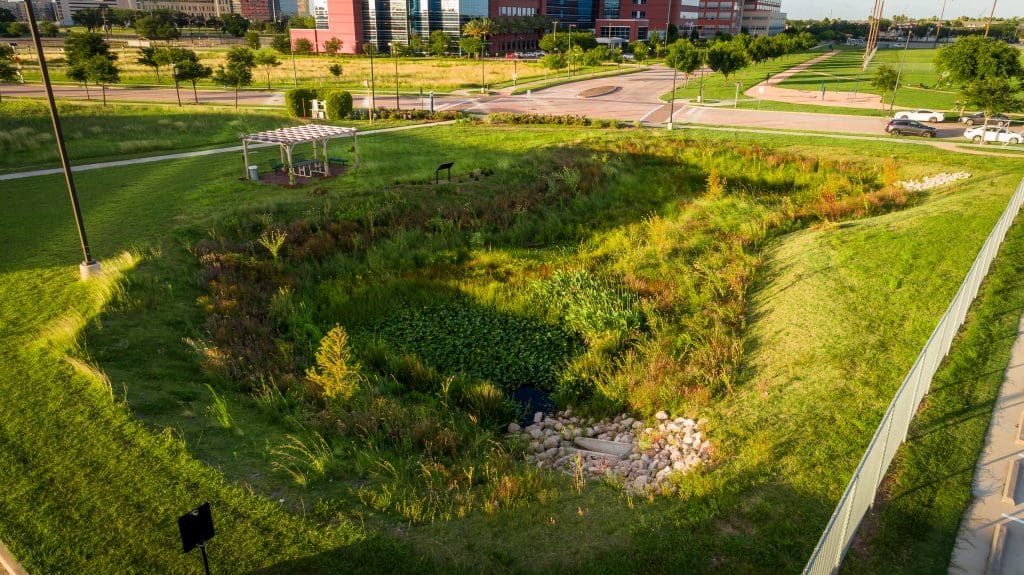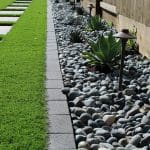
Landscape professionals are stewards of the environment but just like anything else in life, there is always room for improvement. As we celebrate another Earth Day, one facet of sustainability you can examine in your operations is your efforts to increase biodiversity in your clients’ properties.
Biodiversity is the number and variety of species in an area, typically pertaining to an ecosystem. Landscapes with biodiversity tend to be more resilient and more productive at ecosystem services like cleaning water, cleaning air and nutrient cycling.
Currently, animal populations worldwide have declined by 69% over the last 50 years due to urbanization and population growth.
The Benefits of Biodiversity
Biodiversity plays an important role in ecosystem stability and resilience. For instance, salt marsh plants and microbes stabilize and bind soil together. These ecosystems can provide better resistance to soil erosion. Salt marshes and mudflats also serve as an important aspect of flood prevention for coastal communities.
Healthy soil has a diversity of microbes that break down organic matter. They also play a huge role in water purification. Wetland ecosystems are also responsible for removing 20 to 60% of metals in water.
Millions of species also work together to supply us with the foods we eat every day.
According to a report in the journal Biological Conservation, insect populations have declined by 40% globally and one-third are endangered. These insects play a crucial role in pollinating plants and serve as the base of a food chain that animals and humans depend on.
There are many threats to biodiversity including habitat loss, pollution, invasive species and more.
Ways to Boost Biodiversity in Landscapes
While it’s easy for you to understand the value of biodiversity, your customers may hear biodiversity and simply think, ‘I don’t want a high-maintenance landscape,’ or ‘How much more is this going to cost me?’
This is why it’s important to educate your clients on the value of biodiversity and present them with attractive landscape elements that can boost biodiversity on a property. Stress to them that they can still have a low-maintenance landscape and support wildlife at the same time.
If you have residential clients, some easy methods to support biodiversity in your designs are to suggest pollinator gardens, bird sanctuaries, or even adding a small water feature.
Talk to your clients about what sort of pollinators they’d like to attract to their backyard and build a plant palette that will support both their food and habitat needs. For instance, certain butterflies depend on specific host plants as caterpillars. Also make sure to plant these pollinator gardens in bloom succession so pollinators will have all the pollen and nectar needed throughout the seasons.
Bird sanctuaries are another option you can create for clients by ensuring you have plants that support their food and shelter needs. Water is another crucial feature that can help support birds and other wildlife. GreenWeaver Landscapes was able to take a property struggling with drainage and created a pond with a bog filter to solve this problem. Native plants were used to attract birds and butterflies while retaining the characteristics of a dry oak heath forest.

On the commercial side of things, look for opportunities to go beyond the status quo. For instance, when the MD Anderson Cancer Center in Houston, Texas, needed to add a stormwater detention pond, Lawn Management Company was able to turn the detention area into a naturalized wetland.
Explain to your clients that solving problems with natural systems can be functional and beautiful. In the case of an HOA dealing with shoreline erosion, Pizzo & Associates, Ltd. was able to install a natural system of native plants.
Adding bioswales, wildlife nesting boxes and even simply preserving certain sections of the property to be left wild can all help enhance biodiversity on your commercial clients’ landscapes.
Other practices, such as removing invasive plant species, leaving structural habitat spaces and using integrated pest management practices, can also boost biodiversity in the landscape.



